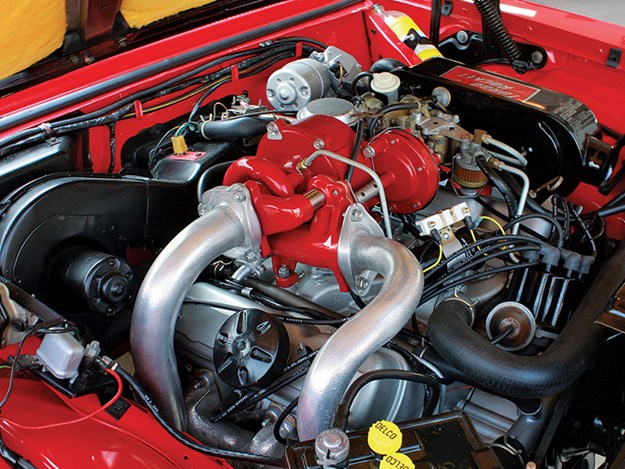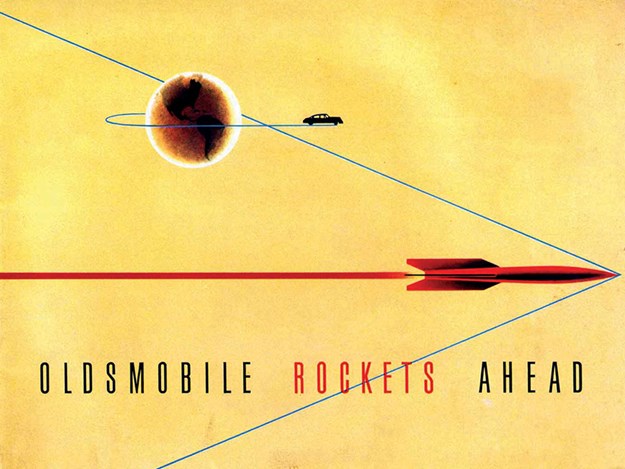Merry Oldsmobiles - Blackbourn 462



|
Rob seems to think that fortune favoured the brave at Oldsmobile. Well, for a lot of time at least
From my primary school days and continuing through well into my working life, the US auto industry fascinated me. These were Detroit’s halcyon years when the industry’s size, influence, optimism and its seemingly eternal onward and upward thrust mirrored the rising trajectory of the USA itself in respect of the nation’s prosperity, self-belief and place in the global scheme of things. While my focus was on the bread and butter Fords, Chevs and Plymouths, I also kept an eye on what was happening with brands positioned higher in the pecking orders of the "big three" factories.

Where the good stuff happens
One example was GM’s Oldsmobile, a brand that was on my radar more than once during my teenage years. As a hot rodder working with the affordable, much-loved, but primitive side-valve Ford V8 engines I was deeply envious of the access my US counterparts had to OHV V8s at giveaway prices in wrecking yards across the country during the 1960s. Of the post-war OHV V8s released in the US it was Oldsmobile’s "Rocket" that first captured the imagination of US hot rodders. The evocatively named motor got off to a good start in 1949 being showcased in the Indy 500 pace car, an Oldsmobile Rocket 88, and remained a popular choice for many hot rodders and racing-special builders until the arrival of the all-new small-block Chev V8 during the late-1950s.
.jpg)
While my Rocket-V8-envy continued for some time, my interest in the broader automotive scene meant that another Oldsmobile matter was on my mind during that period. A recurring rumour insisted that a quite valuable "curved-dash" Oldsmobile (officially the Model R – from 1901-07) was languishing in a shed on a semi-derelict property at "White’s Corner" high on the hill in Doncaster, then an almost rural outer-eastern suburb of Melbourne. Unlike the also rumoured "Nareeb" Silver Ghost Rolls-Royce that actually emerged from hiding at a soon-to-be-demolished mansion in Toorak in 1964, the "curved-dash" Oldsmobile rumour continued to circulate mysteriously, even after the site was levelled for the construction of Westfield Shoppingtown that opened in 1969.
Professionally I admired Oldsmobile’s engineering and product planning group for its creativity and radicalness compared to the usual conservatism of other GM divisions (the notable exception being Chevrolet’s courageous Corvair adventure that I applauded).

Although GM’s central engineering staff provided the basic design template for the company’s all-new 215ci (3.5-litre) alloy V8 for the separate Buick and Oldsmobile divisions in the early 60s, the final versions Buick and Oldsmobile produced were not identical. The Olds version had a stronger block casting than the Buick and also featured stiffer head clamping with 6 bolts around each pot compared with the Buick’s five. No surprise then that Traco in the USA and Repco-Brabham in Australia chose the Oldsmobile version as the basis for their race engines. Oldsmobile soon moved to turbocharge the little alloy V8 to power its compact Jetfire hardtop. This made the 1962 Jetfire the first turbocharged production car (I must acknowledge, just ahead of the Corvair Spyder). This milestone was followed by the Oldsmobile Toronado, America’s first front-wheel drive coupe in almost 30 years. Oldsmobile then went on to develop the first diesel engines for GM passenger cars. Admittedly things didn’t always work out perfectly. The turbo Jetfire engine exhibited detonation problems that required mitigation with water/methanol injection and the Diesels ultimately proved to be unreliable. But hey, I still admired Oldsmobile’s willingness to stick its head above the engineering parapet.

Shoot for the stars with a Rocket V8
My personal involvement with Oldsmobile came at GMH at Fishermans Bend on a project to equip the HT 350 Monaro with Bathurst-winning brakes – complex front brakes employing multi-disk packs within a sealed chamber, all cooled by circulated oil. As GMH tracked behind Oldsmobile on the system’s development, I was sourcing expensive precision gauging-fixtures and jigs vital to correctly assembling the units. A great project to get your teeth into. Very interesting work. Then we learned that a prototype system had failed dramatically at Lang Lang. The killer news was that Oldsmobile decided to abandon the troubled project leaving little GMH on its own. Game over. Huge disappointment and big cancellation costs.

Oil-cooled brakes - not quite!
My disappointment was nothing compared to the experience of brake engineer Bob Watson (yes, the rally driving champ), when the Monaro’s brake pedal went to the floor at Lang Lang at around 200km/h just before a sharp right-hander…
From Unique Cars #462, Feb 2022
Unique Cars magazine Value Guides
Sell your car for free right here
Get your monthly fix of news, reviews and stories on the greatest cars and minds in the automotive world.
Subscribe

.jpg)












